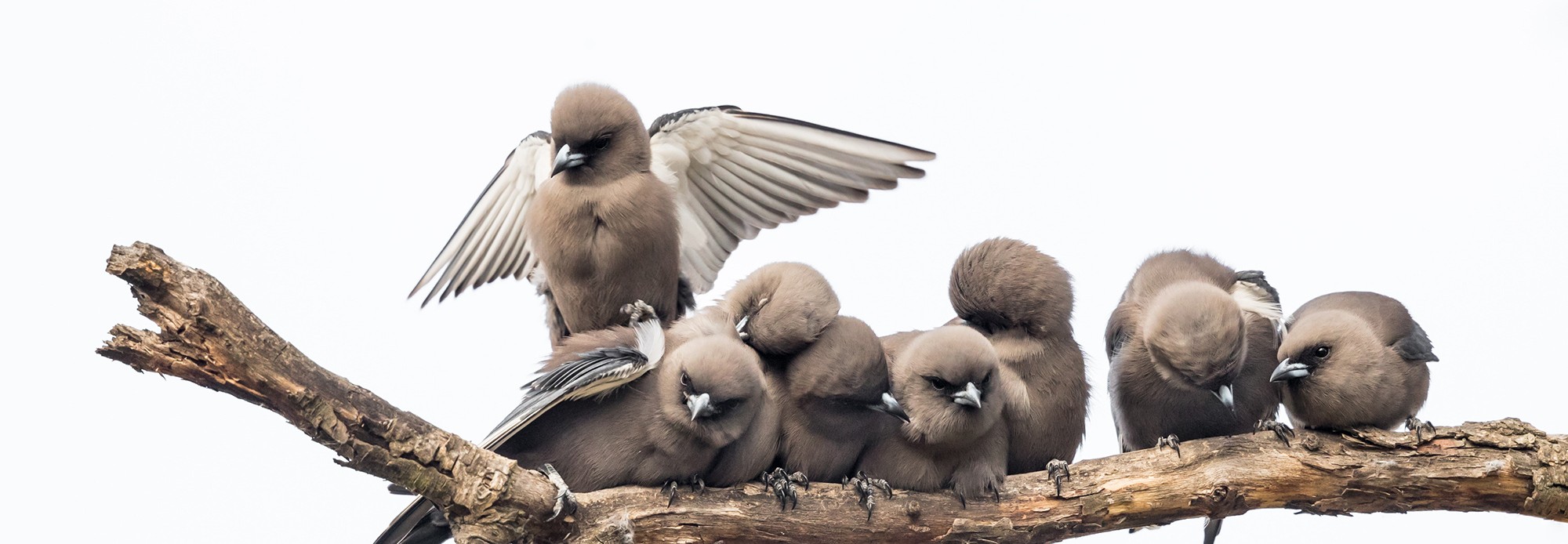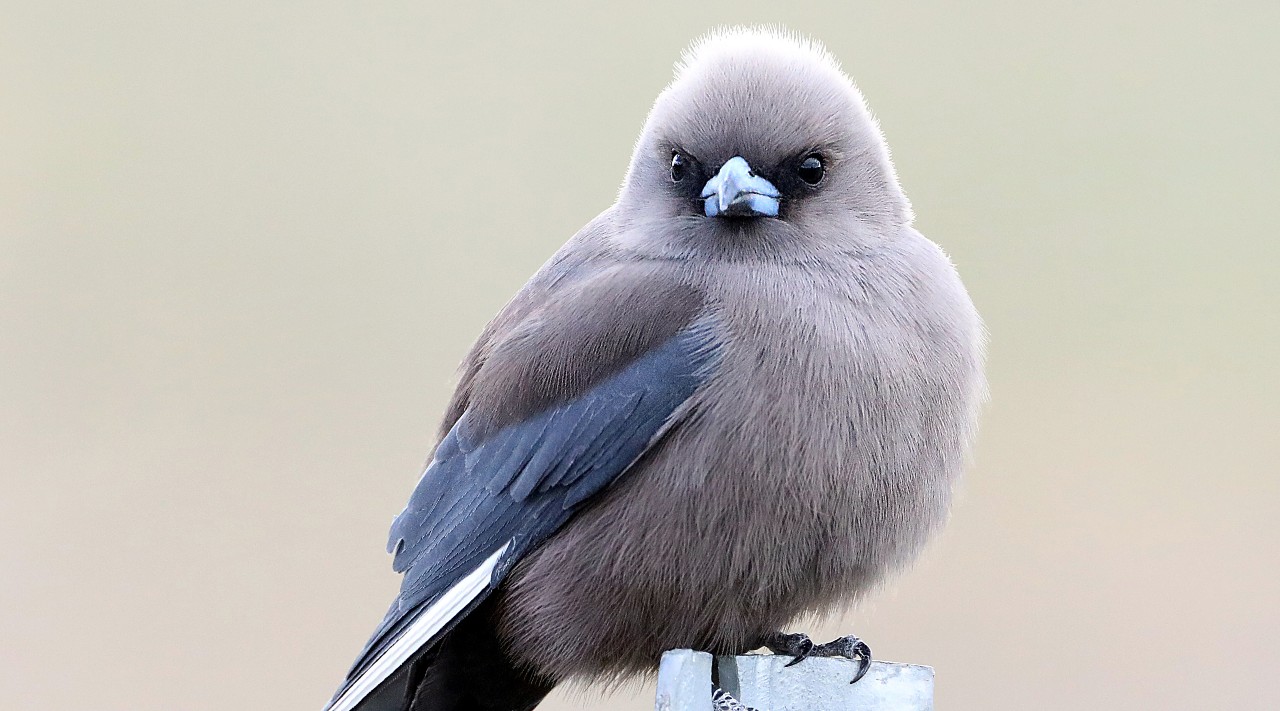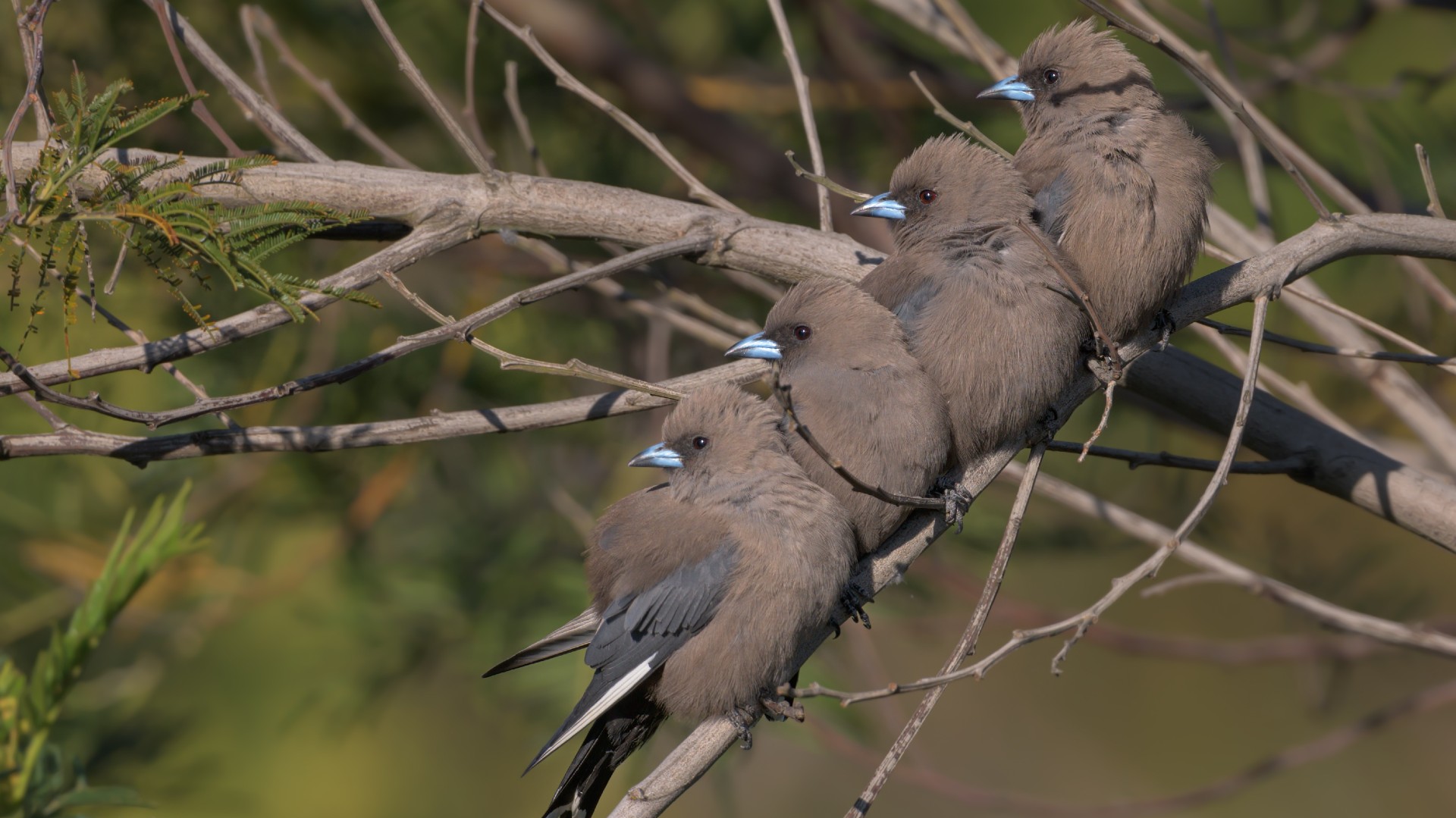Bird Overview
The Dusky Woodswallow moves in flocks of 10 to 30 birds, which cluster together to roost. The Dusky Woodswallow has a distinctive white patch on the outer wing. It tends to be more smoky brown than most of the other woodswallows.
Identification
The Dusky Woodswallow is a smoky deep brown to grey bird. The wings are dark blue-grey, edged white, the tail is black with a broad white tip and the underwings are silvery-white. The bill is blue-tipped black and the eye is dark brown. Young birds are grey-brown, streaked and mottled buff to cream.
Songs and Calls
Brassy chirrups and chirps: ‘vut vut’; also harsh chattering and some mimicry. Bird call recorded by: Fred Van Gessel
Location
The Dusky Woodswallow has two separate populations. The eastern population is found from Atherton Tableland, Queensland south to Tasmania and west to Eyre Peninsula, South Australia. The other population is found in south-west Western Australia.
Habitat
The Dusky Woodswallow is found in open forests and woodlands and may be seen along roadsides and on golf courses.
Behaviour
Dusky Woodswallows swivel their tails in a ‘tail wag’ that is typical of the whole woodswallow group.
Feeding
The Dusky Woodswallow feeds on insects taken on the wing, as well as from foliage and on the ground. It also eats nectar from flowers.
Breeding
The Dusky Woodswallow nests colonially in ‘neighbourhoods’. The nest is a loose bowl of twigs, grass and roots, lined with fine grass, and is placed in a tree fork, behind bark, in a stump hollow or in a fence post, about 1 m – 10 m above the ground. Each pair builds the nest, incubates the eggs and feeds the young.


